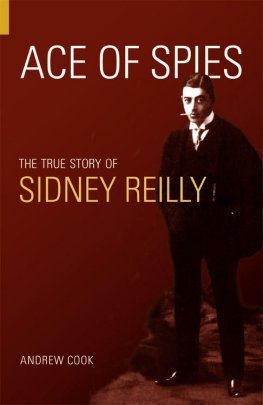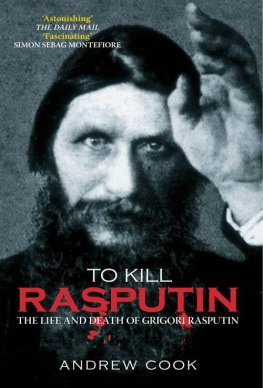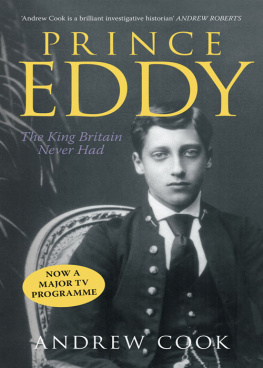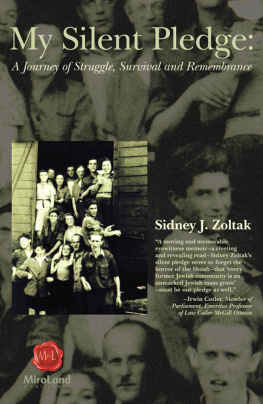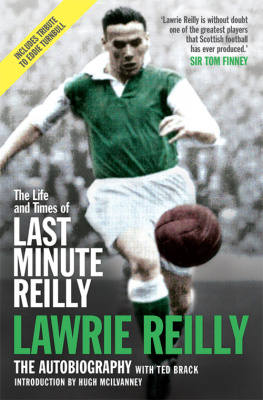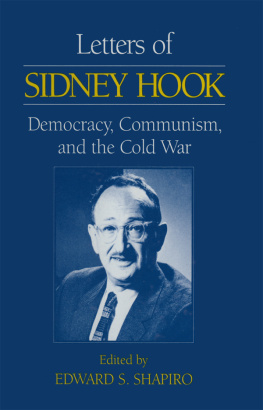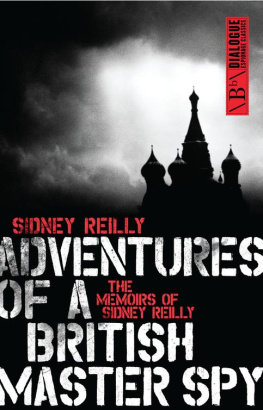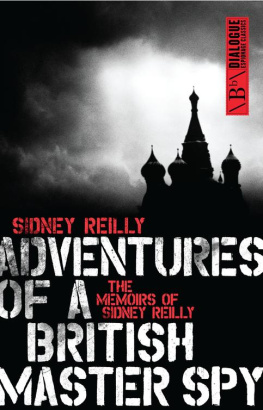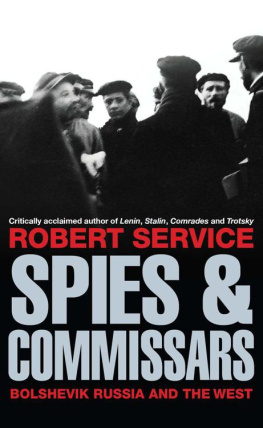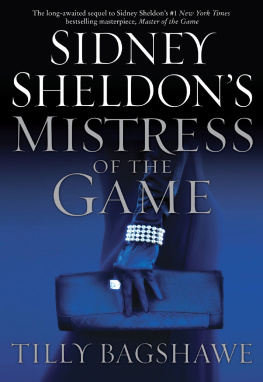Andrew Cook
ACE OF SPIES
The True Story of
SIDNEY REILLY
I owe a debt of gratitude to all those involved in the development of this book. It took many years to research and a large number of people were involved in the project from inception to completion.
My particular thanks go to the principal researchers who assisted me: Jordan Auslander (USA); Dmitry Belanovsky (Russia); Vladislav Kiriya (Ukraine); Dr Sylvia Moehle (Germany); and Stephen Parker and Graham Salt (UK). I would also like to thank Michel Ameuw (France), Dr Michael Attias (UK), Marc Bernstein (USA), Norman Crowder (Canada), Alex Denisenko (Poland), Lynda Fagan (UK), Dr Tatiana Filimonova (Russia), Sigita Gasparaviciene (Lithuania), Maria Herman (Brazil), Geoffrey Hewlett (UK), Reinhard Hofer (Austria), Sinan Kuneralp (Turkey), Sean Malloy (USA), Mary Morrigan (Eire), Irina Mulina (Russia), Danna Paz Prins (Israel), Mikhail Sachek (Belarus), Ishizu Tomoyuki (Japan) and Mark Windover (USA) for additional assistance with research.
In the pursuit of source material, I am much indebted to ministers and former ministers for whom I have previously worked, for their advice concerning access to UK records. As a result of an approach to the Cabinet Office, the government agreed to provide me with a briefing based on the records of Sidney Reillys service with the Secret Intelligence Service (SIS), for the purpose of this book. This has helped enormously, as indeed has the opportunity to compare UK records with those of the Federal Security Service (FSB) in Russia and the US Bureau of Investigation (the forerunner of the FBI) in Washington DC.
The help and co-operation of the families of those who played a role in Reillys story has been greatly appreciated, as has the assistance of Francis & Francis (private investigators), who helped in tracing them. Special gratitude is owed to Diane Briscoe, George Burton, Carmel Callaghan-Sinnott, Teodor Gladkov, Boris Gudz, Edward Harding-Newman, Charles Lewis, Gustav Nobel, Trevor Melville, Anne Thomas, Viscount Thurso and Brigid Utley.
I have been most grateful to those who have previously written on this and related subjects for speaking or corresponding with me Gill Bennett, Gordon Brook-Shepherd, Alan Judd, the late Michael Kettle, Margot King, Robin Bruce Lockhart, Professor Ian Nish, Gail Owen, Professor Richard Spence, Carol Spero and Oleg Tsarev.
A special thank you to Lisa Adamson, Laura Ager, Caroline Beach, Daksha Chauhan, Alison Cook, Julia Edwards, Elaine Enstone, Janet Jacobs, Bob Sheth, Selina Short and Chris Williamson for their hard work at various stages of this project. Also to Eurotech Ltd for their sterling work in translating the masses of source material from Russian, German and French into English.
There are equally a number of individuals I would like to thank for their help, but cannot name for reasons of protocol. However, they are already aware of my gratitude and have been thanked in person. Last, but certainly not least, my thanks go to my editor Joanna Lincoln and to my publisher Jonathan Reeve for his support, enthusiasm and advice throughout.
INTRODUCTION TO THE SECOND EDITION
When the first edition of this book was published in October 2002, it received a great deal of media coverage, not only in Britain but around the world. Since then, the first edition has been reprinted in this country and translated into several foreign editions. When the idea of writing a revised and updated second edition was suggested by my publisher Jonathan Reeve, I saw it as an ideal opportunity to follow up several further lines of enquiry that were still outstanding at the time of submitting the manuscript for the first edition. As a result, a wealth of new evidence has been uncovered that sheds new light on significant episodes in Reillys life.
For example, photo-forensic work by Ken Linge, which was still being undertaken at the time the first edition was being printed, is now concluded and has made a major contribution to establishing Reillys parentage and family lineage. Another mystery concerning his involvement in a crime that forced him to flee from France to England in 1895 is also solved thanks to new research in France by Michel Ameuw. Other new discoveries include German files on Reillys shady commercial dealings in the Ottoman Empire before the First World War, letters he wrote in 1917 which clear up the mystery of his whereabouts in the autumn of that year, and the discovery of a repository of papers belonging to Major J.D. Scale, the intelligence officer who recruited Reilly to the Secret Intelligence Service (better known today as MI6) in 1918.
In Moscow, new finds include the personal testimonies of Reillys mistresses Olga Starzhevskaya and Elizaveta Otten, written during their captivity in Butyrka Prison. These previously unpublished accounts not only provide a glimpse of their personal relationships with Reilly but give a unique insight into the secret life he was living in Russia during the spring and summer of 1918. Perhaps the most astonishing new account, however, is that of Boris Gudz, a former OGPU officer who took part in the 1925 Trust operation that resulted in Reillys arrest and execution. Gudz, who celebrated his 100th birthday shortly before I met him in Moscow in August 2003, was able to provide first-hand recollections that were invaluable in piecing together the last few weeks of Reillys life.
Taken together, these and other new sources, many of which are published in this book for the first time, make a unique contribution to this definitive work of reference on the life of the Ace of Spies, Sidney Reilly.
The idea of writing a spy novel had apparently been in Ian Flemings mind for a decade before he finally decided to commit the book to paper. Little did he know the phenomenon he was about to create when he sat down behind his typewriter on the morning of 15 January 1952 to start the first chapter of Casino Royale. Working at Goldeneye, his Jamaican holiday home, he completed the 62,000-word manuscript in a little over two months.1 On the shelf in his study was the book that had gifted him the name of his hero, Field Guide to Birds of the West Indies, by the ornithologist James Bond.2 Not long after its publication in April 1953, Fleming told a contemporary at the Sunday Times, where he worked as foreign manager, that he had created James Bond as the result of reading about the exploits of the British secret agent Sidney Reilly in the archives of the British Intelligence Services during the Second World War.3
As personal assistant to the Director of Naval Intelligence during the Second World War, Cmdr Ian Fleming was a desk-bound intelligence officer who liaised closely with other agencies involved in the clandestine world of espionage. He learnt a great deal about the operational history of his own department, including its role in the greatest intelligence coup of the First World War the cracking of the German diplomatic code 0070, which gave Fleming the inspiration for Bonds own code number 007.4 This background knowledge enabled him to draw on a rich seam of characters, experiences and situations that would prove invaluable in creating the fictional world of James Bond.
One of Flemings wartime contacts, for example, was Charles Fraser-Smith, a seemingly obscure official at the Ministry of Supply. In reality, Fraser-Smith provided the intelligence services with a range of fascinating and ingenious gadgets such as compasses hidden inside golf balls and shoelaces that concealed saw blades.5 He was the inspiration for Flemings Major Boothroyd, better known as Q in the Bond novels and films.

